 Web Front-end
Web Front-end JS Tutorial
JS Tutorial How to build a high-throughput message queue application using React and Kafka
How to build a high-throughput message queue application using React and Kafka
How to use React and Kafka to build a high-throughput message queue application
Introduction:
With the rapid development of the Internet, real-time data processing becomes more and more important The more important it is. As a data communication mechanism, message queue plays a vital role in distributed systems. This article will introduce how to use React and Kafka to build a high-throughput message queue application, explaining each step in detail through code examples.
1. Understand React:
React is an open source JavaScript library used to build user interfaces. It has high performance, componentization, reusability and maintainability, and has become one of the mainstream frameworks for front-end development. In this article, we will use React to build the front-end interface of our message queue application.
2. Understand Kafka:
Kafka is a distributed streaming processing platform, mainly used to build high-throughput, low-latency real-time data pipelines. It has high scalability and fault tolerance, supports horizontal expansion, and can handle massive data flows. In this article, we will use Kafka to build the backend of our message queue application.
3. Build a React development environment:
First, we need to build a React development environment. Before doing this, make sure you have Node.js and npm installed. Next, follow these steps:
-
Open a terminal and create a new React project folder:
mkdir message-queue-app cd message-queue-app
-
Use create-react -app command line tool to initialize the React application:
npx create-react-app client cd client
-
Use the following command to start the development server:
npm start
- Open http://localhost:3000, you You will see the splash page of your React application.
4. Integrate Kafka into React application:
Next, we will integrate Kafka into React application. Before doing this, make sure you have Apache Kafka installed and running.
-
In the root directory of the React application, use the following command to install the kafkajs library:
npm install kafkajs
-
Create a file named KafkaConsumer.js file, used to write Kafka consumer code. The sample code is as follows:
const { Kafka } = require('kafkajs'); const kafka = new Kafka({ clientId: 'message-queue-app', brokers: ['localhost:9092'] }); const consumer = kafka.consumer({ groupId: 'message-queue-app-group' }); const run = async () => { await consumer.connect(); await consumer.subscribe({ topic: 'messages', fromBeginning: true }); await consumer.run({ eachMessage: async ({ topic, partition, message }) => { console.log({ value: message.value.toString() }); } }); await consumer.disconnect(); }; run().catch(console.error); -
Import the KafkaConsumer component in the src/App.js file, and then call the code in the KafkaConsumer component in the component's life cycle function. The sample code is as follows:
import React, { Component } from 'react'; import KafkaConsumer from './KafkaConsumer'; class App extends Component { componentDidMount() { KafkaConsumer(); } render() { return ( <div className="App"> <h1 id="Message-Queue-App">Message Queue App</h1> </div> ); } } export default App;
5. The producer sends messages to Kafka:
Now that we have integrated the Kafka consumer into the React application, next we need to create Kafka Producers send messages to Kafka.
-
In the root directory of the React project, create a file named producer.js for writing the code for the Kafka producer. The sample code is as follows:
const { Kafka } = require('kafkajs'); const kafka = new Kafka({ clientId: 'message-queue-app-producer', brokers: ['localhost:9092'] }); const producer = kafka.producer(); const run = async () => { await producer.connect(); const message = { value: 'Hello Kafka!' }; await producer.send({ topic: 'messages', messages: [message] }); await producer.disconnect(); }; run().catch(console.error); -
Execute the following command in the terminal to run the producer code:
node producer.js
- In the browser's console, you will see Messages from Kafka are printed.
Summary:
This article introduces how to use React and Kafka to build a high-throughput message queue application. With React, we can easily build user interfaces; with Kafka, we can achieve high-throughput messaging. We explain each step in detail with code examples. I hope this article will be helpful to you and enable you to better use React and Kafka to build powerful message queue applications.
The above is the detailed content of How to build a high-throughput message queue application using React and Kafka. For more information, please follow other related articles on the PHP Chinese website!
 react中canvas的用法是什么Apr 27, 2022 pm 03:12 PM
react中canvas的用法是什么Apr 27, 2022 pm 03:12 PM在react中,canvas用于绘制各种图表、动画等;可以利用“react-konva”插件使用canvas,该插件是一个canvas第三方库,用于使用React操作canvas绘制复杂的画布图形,并提供了元素的事件机制和拖放操作的支持。
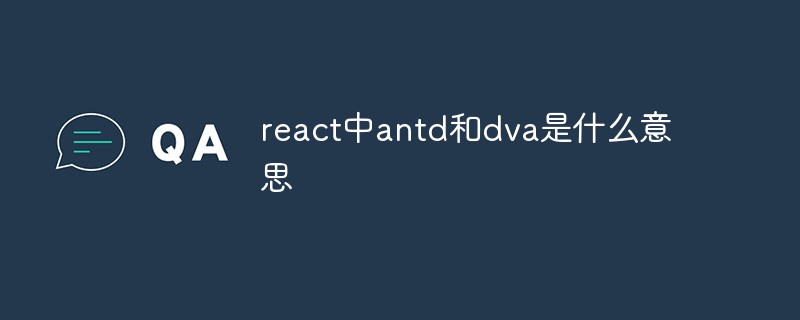 react中antd和dva是什么意思Apr 21, 2022 pm 03:25 PM
react中antd和dva是什么意思Apr 21, 2022 pm 03:25 PM在react中,antd是基于Ant Design的React UI组件库,主要用于研发企业级中后台产品;dva是一个基于redux和“redux-saga”的数据流方案,内置了“react-router”和fetch,可理解为应用框架。
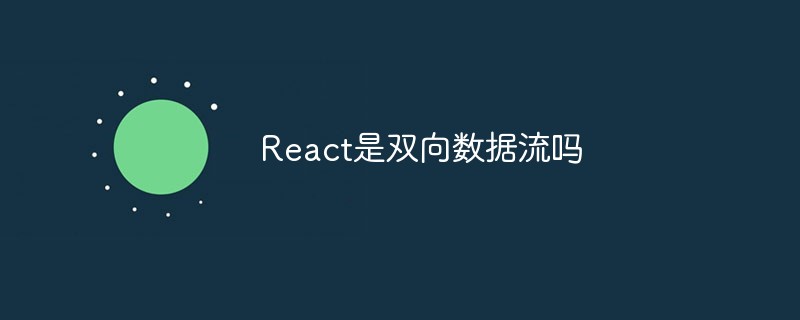 React是双向数据流吗Apr 21, 2022 am 11:18 AM
React是双向数据流吗Apr 21, 2022 am 11:18 AMReact不是双向数据流,而是单向数据流。单向数据流是指数据在某个节点被改动后,只会影响一个方向上的其他节点;React中的表现就是数据主要通过props从父节点传递到子节点,若父级的某个props改变了,React会重渲染所有子节点。
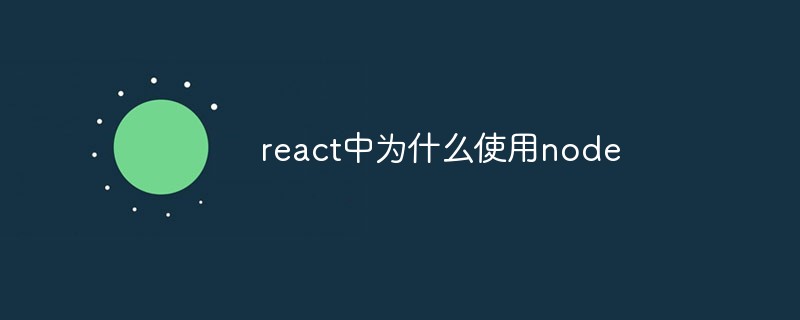 react中为什么使用nodeApr 21, 2022 am 10:34 AM
react中为什么使用nodeApr 21, 2022 am 10:34 AM因为在react中需要利用到webpack,而webpack依赖nodejs;webpack是一个模块打包机,在执行打包压缩的时候是依赖nodejs的,没有nodejs就不能使用webpack,所以react需要使用nodejs。
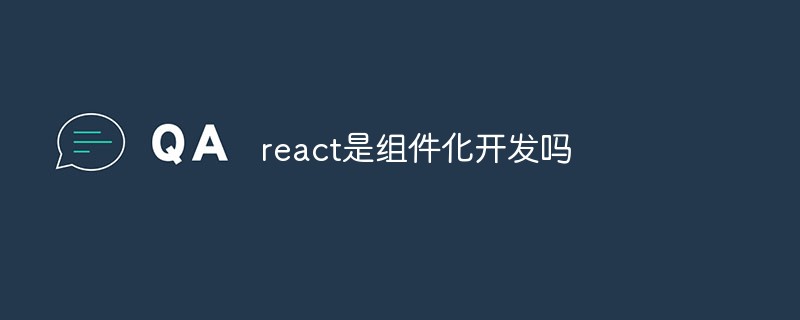 react是组件化开发吗Apr 22, 2022 am 10:44 AM
react是组件化开发吗Apr 22, 2022 am 10:44 AMreact是组件化开发;组件化是React的核心思想,可以开发出一个个独立可复用的小组件来构造应用,任何的应用都会被抽象成一颗组件树,组件化开发也就是将一个页面拆分成一个个小的功能模块,每个功能完成自己这部分独立功能。
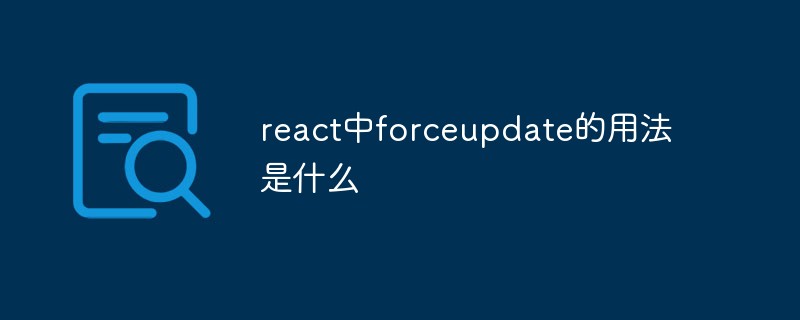 react中forceupdate的用法是什么Apr 19, 2022 pm 12:03 PM
react中forceupdate的用法是什么Apr 19, 2022 pm 12:03 PM在react中,forceupdate()用于强制使组件跳过shouldComponentUpdate(),直接调用render(),可以触发组件的正常生命周期方法,语法为“component.forceUpdate(callback)”。
 react和reactdom有什么区别Apr 27, 2022 am 10:26 AM
react和reactdom有什么区别Apr 27, 2022 am 10:26 AMreact和reactdom的区别是:ReactDom只做和浏览器或DOM相关的操作,例如“ReactDOM.findDOMNode()”操作;而react负责除浏览器和DOM以外的相关操作,ReactDom是React的一部分。
 react与vue的虚拟dom有什么区别Apr 22, 2022 am 11:11 AM
react与vue的虚拟dom有什么区别Apr 22, 2022 am 11:11 AMreact与vue的虚拟dom没有区别;react和vue的虚拟dom都是用js对象来模拟真实DOM,用虚拟DOM的diff来最小化更新真实DOM,可以减小不必要的性能损耗,按颗粒度分为不同的类型比较同层级dom节点,进行增、删、移的操作。


Hot AI Tools

Undresser.AI Undress
AI-powered app for creating realistic nude photos

AI Clothes Remover
Online AI tool for removing clothes from photos.

Undress AI Tool
Undress images for free

Clothoff.io
AI clothes remover

AI Hentai Generator
Generate AI Hentai for free.

Hot Article

Hot Tools

Dreamweaver CS6
Visual web development tools

Zend Studio 13.0.1
Powerful PHP integrated development environment

Safe Exam Browser
Safe Exam Browser is a secure browser environment for taking online exams securely. This software turns any computer into a secure workstation. It controls access to any utility and prevents students from using unauthorized resources.

SublimeText3 Mac version
God-level code editing software (SublimeText3)

Atom editor mac version download
The most popular open source editor






